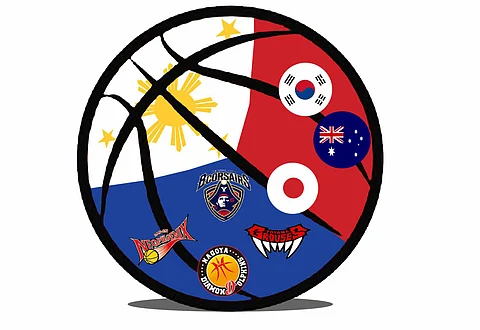
- NEWS
- the EDIT
- COMMENTARY
- BUSINESS
- LIFE
- SHOW
- ACTION
- GLOBAL GOALS
- SNAPS
- DYARYO TIRADA
- MORE

These days, young Filipino basketball players are no longer dreaming of making it to the Philippine Basketball Association or becoming part of the national team.
They are all wanting to play in Japan, South Korea, Australia, the United States — anywhere but the Philippines.
Take the case of Kevin Quiambao.
Quiambao is arguably the best amateur player in the country right now. But shortly after emerging as the Most Valuable Player in the University Athletic Association of the Philippines, Quiambao flirted with the idea of flying to Japan to explore the possibility of seeing action in the B. League.
A few days later, he had a change of heart, saying that he will stay home to help De La Salle University win another UAAP title.
But now that Quiambao is doing well in the 33rd Dubai International Basketball Championship, reports surfaced that two teams — a club in the Middle East and the national team of the United Arab Emirates — are determined to acquire his services.
Even the New York Knicks have been rumored to be interested in recruiting him to their Summer League team in the National Basketball Association. Fortunately for Filipino fans, Strong Group head coach Charles Tiu shot down the report, clarifying that the Knicks had yet to reach out to the 22-year-old forward.
Having Filipinos linked to recruiting rumors by international teams is both flattering and alarming.
It’s flattering that the talent of Filipino cagers is finally being noticed by international coaches, scouts, and team owners. It’s alarming as the continued departure of local players for better opportunities abroad could soon lead to a talent drain in this basketball-crazy country.
It was Thirdy Ravena who started the exodus. After ending his college career at Ateneo de Manila University on a red-hot note, Ravena did the unthinkable by skipping the PBA draft to sign with the San-En NeoPhoenix, a Japanese club based in Toyashi whose main line of business is the manufacture of machine spare parts.
With Ravena getting the bag — reportedly a cool $50,000, or P2.8 million, a month — young Filipino cagers were soon making a beeline for the airport. His older brother, Kiefer, suddenly signed with Shiga Lakes despite having a live contract with NLEX in the PBA, while Ray Parks suddenly went missing in action for TNT Tropang Giga to ink a contract with the Nagoya Diamond Dolphins.
Dwight Ramos also jumped ship, abandoning the remaining years of his UAAP eligibility at Ateneo to play for the Toyama Grouses, while former University of the Philippines stars Carl Tamayo, Juan and Javi Gomez de Liaño, former San Beda University forward Kenmark Cariño and Adamson role player Matt Aquino became part of the initial batch of Filipino imports.
Now, almost all of the country’s top players are either in Japan or Korea.
Kai Sotto, the 7-foot-4 wunderkind, didn’t play even a single minute in the seniors division of the UAAP to chase his dream of becoming an NBA player as he campaigned in the United States at such a young age of 17 before moving to Australia. Now, he is with the Yokohama B-Corsairs and it appears that the PBA, where his father once played, is already in his rearview mirror.
Although Sotto, the Ravena brothers, Parks, Tamayo, Ramos and other young stars still make sure to go home whenever Gilas Pilipinas needs help in the international arena, the fact remains that the PBA could have been more solid, stronger had these stars stayed not just to win titles but to entertain the Filipino fans as well.
It’s about time the Samahang Basketbol ng Pilipinas did something about this migration. Sure, the insane salaries and promise of a better future for their families are hard to ignore, but cage officials have to, at least, try and do something that would make them reconsider their decision to seek greener pastures elsewhere.
Meanwhile, Quiambao will be staying at La Salle. We just don’t know where he’ll end up next year.
